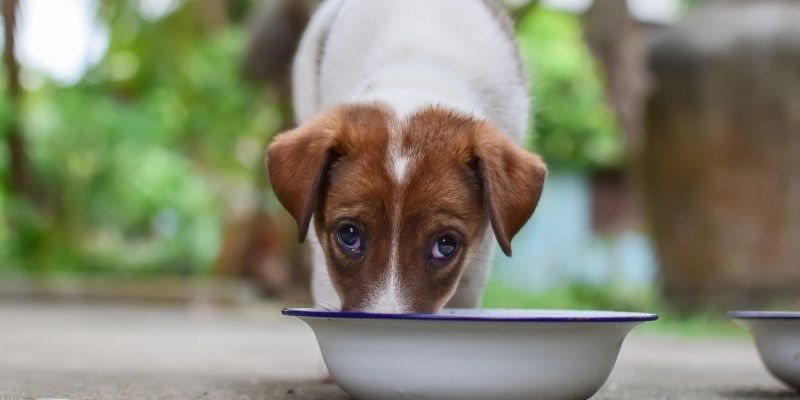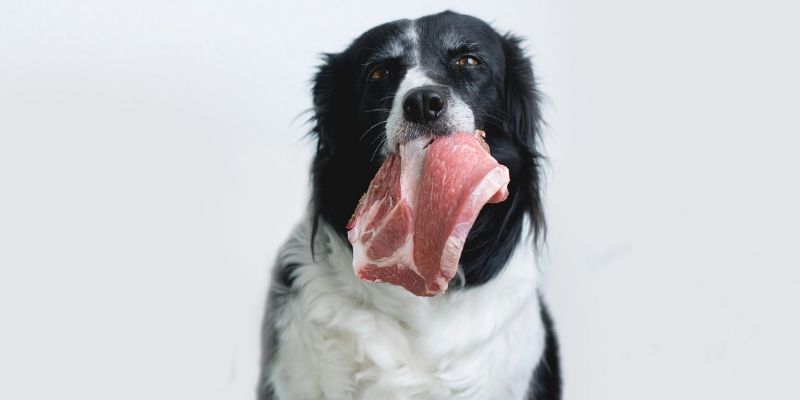There are a few myths regarding certain breeds of dogs – for example, the myth that small dogs are simply healthier than large dogs. This is not the case. In fact, some of the healthiest large dog breeds include Doberman and German Shepherd. But whether your dog big or small, kidney disease is one of the conditions that still may affect your pet’s health.
When your dog is diagnosed with kidney disease, it’s devastating news for the whole family. This organ performs a crucial function in dogs. Like in humans, kidneys will filter waste and help keep the metabolic system functioning by creating urine.
Dogs are in danger of developing kidney disease when they eat toxins – and unfortunately, that’s not hard to do when you’re a dog. Plants that contain certain toxins, medications, anti-freeze (which, for some reason, tastes especially appetizing to canines)… All of those can cause kidney disease or even kidney failure. The greatest thing, though, is that food can not only cause it but also cure it. So today, I’ll try to figure out what to feed a dog with kidney disease.
Do you have a specific question about kidney dog food? Then use the table of contents below to jump to the most relevant section. And you can always go back by clicking on the black arrow in the right bottom corner of the page. Also, please note that some of the links in this article may be affiliate links. For more details, check the Disclosure section at the bottom of the page.
Here's what we'll cover:
- What Foods are a NO When Your Dog Suffers From Kidney Disease
- Can Proper Diet Help Heal Kidney Disease in Dogs?
- What foods should a dog with kidney disease eat?
- Raw diet for dogs with kidney disease. Is it ok?
- What to feed a dog with kidney failure who will not eat?
- How do you make homemade dog food for kidney disease?
What Foods are a NO When Your Dog Suffers From Kidney Disease

Salt exacerbates kidney condition, and it’s best to exclude foods that are high in salt. This includes:
- Cured meats
- Cheese
- Bread
- High sodium commercial dog treats
- Tap water
- Polyunsaturated vegetable oils (soy, canola, sunflower, etc.)
- Phosphorus-high foods

Can Proper Diet Help Heal Kidney Disease in Dogs?
A proper diet can slow down the progression of kidney disease in dogs and ward off kidney failure. Some foods are proven to be great for the kidneys, such as foods containing many Omega-3 fatty acids. Supplements like fish oil are beneficial to canines.
Ask your vet about proper herbal supplements for dogs. There are many out there, and it’s best to get a professional opinion when starting an herbal supplement regimen for any reason. Herbs may interact with other drugs or mediation your dog is taking. In some cases, it might prove beneficial.
What foods should a dog with kidney disease eat?

Nutrition is the primary factor in the treatment of your dog’s kidney failure. Overall, dogs require less calcium, phosphorus, and sodium but should increase their omega-3 fatty acids intake.
This diet can help reduce contaminants that the kidneys usually filter out and alleviate fluid and mineral balance problems.
A well-balanced diet, including new and high-quality foods, is recommended for dogs with kidney disease. It is recommended that you use filtered water, as tap water can contain minerals that place unnecessary stress on your kidneys.
Your dog’s kidney failure diet aims to minimize phosphorus by feeding moderate to high fat, reasonable quantities of high-quality protein, and low phosphorus.
Dogs with kidney problems also do better when they are served multiple small meals during the day rather than just one or two big meals.
Rice is the most recommended grain when it comes to kidney-friendly dog diets. Many high-quality dog foods contain rice because grains are difficult to digest and cause allergies in many dogs. Rice is also a grain with a lower phosphorus content, which damaged kidneys won’t filter out of the dog’s system. Or you can opt-in for potatoes too. After all, it’s grain free.

Raw diet for dogs with kidney disease. Is it ok?

While a raw diet does not solely consist of proteins, it does include quite a fair amount of it, which might not always be an ideal food for dogs with kidney disease.
Veterinary experts widely accepted that high protein diets are not in themselves the cause of either acute or chronic renal failure. However, it appears that if there is pre-existing kidney damage, a high protein diet will serve to further damage the kidneys. That is why most commonly used diets to treat kidney failure are supposed to be low in high-quality protein and phosphorus, moderate sodium. And also moderately high in potassium and EPA/DHA to extend the dogs’ lifespan suffering from this condition.
That’s why a raw diet might not be ideal for your pup in that case.

What to feed a dog with kidney failure who will not eat?
Many dogs with chronic kidney failure will lose weight as the condition progresses, and their appetite decreases. This means that feeding your dog with high-calorie, nutrient-dense food will help control weight.
One way to do this is to progressively increase the fat content of your dog’s diet. Little phosphorus is present in fats. Fatty meats such as lamb and pork are an option, as are whole milk products. A little bacon fat will restore your dog’s interest in food and add extra calories.
Omega-3 fatty acids in fish oil can delay kidney disease progression, and supplements may be helpful for dogs with a kidney disease diet. Liquid fish oil capsules can be used. EPA (eicosapentaenoic acid) and DHA (docosahexaenoic acid) in fish oil can help reduce inflammation and creatinine and reduce kidney pressure.


How do you make homemade dog food for kidney disease?
A high-quality is a must for renal diet for dogs. And the most efficient way to control that is to cook the food yourself.
Of course, it takes more effort – shopping for the right ingredients and preparing the meal is way trickier than just put a few scoops of kibbles into your pet’s bowl. But the outcome is way more rewarding. After all, you can’t put the price on your pup’s health.
The following suggested recipes will help ensure low protein and low phosphorus kidney dog food.
E.g., it can include high-quality meat (such as chicken or beef), veggies (like potatoes and beets). And one ounce of liver or kidney meat per day, split into two meals. Fish oil (not cod liver oil) and other vitamins can be added, as well, if suggested by your vet.
You can use this excellent recipe, for instance. This is a chicken and potato dog food low in protein, phosphorus, and sodium but high in potassium.
To make it use 1/4 cooked chicken breast, 3 cups of boiled potatoes, 2 tablespoons of chicken fat, + some calcium and multivitamins tablets.
The recipe quantities are good for a daily menu for a medium-sized dog (21-to 22-pounds).
And it has 689 calories, including 18.9 g of protein, 26.8 g of fat. It also includes 45% of daily intake of phosphorus, 54% of sodium, and 301% of potassium.
Thanks for the blog graphics: Canva.com


